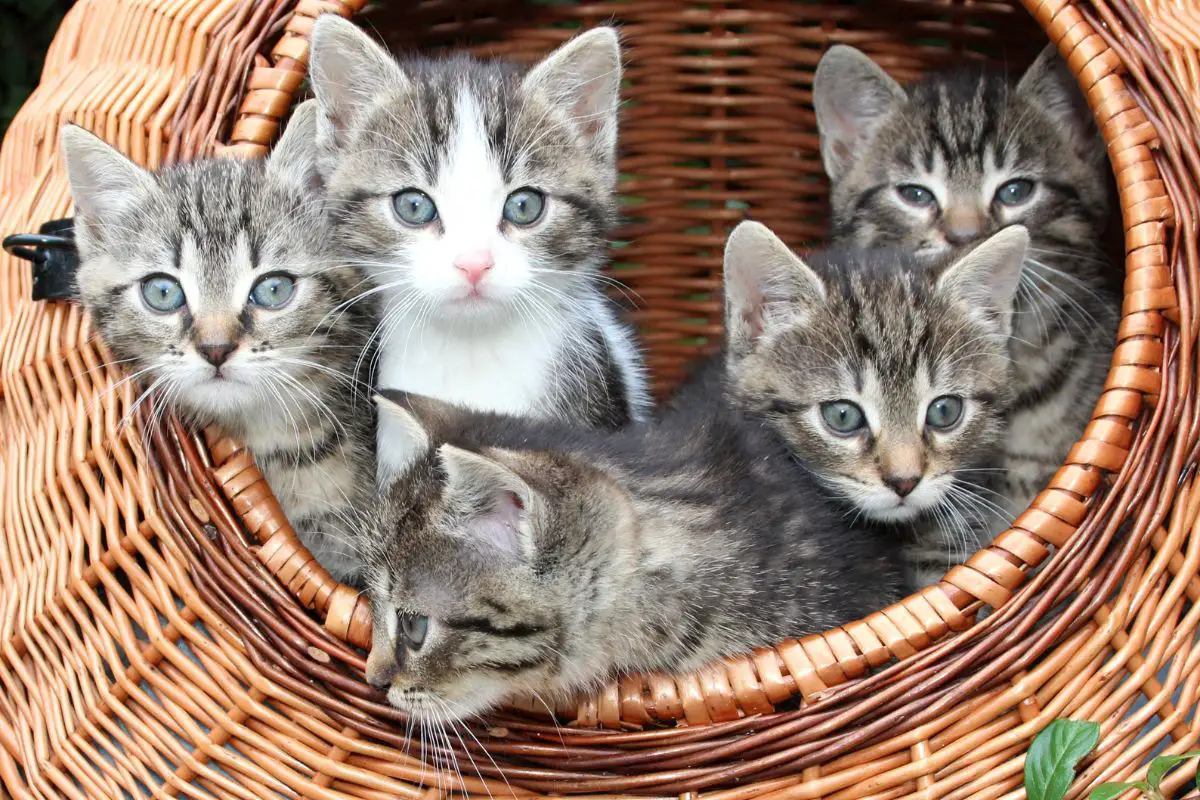
If there’s one thing in the world I can talk about with some authority, it’s cats. But I”m not a hoarder of cats. I have one.
And everything that I know to be true about a cat’s intelligence and behavior, I learned from an unbelievable black cat that came to my door two years ago. Pet cats were domesticated only very recently, some 12, 000 years ago. Today, with the exception of a few “designer breeds” like Toygers or Munchkins, cats, for the most part, mate without human intervention.
That means that the average domestic house cat has changed only slightly from its wildcat ancestors. In other words, your domestic feline is still wild at heart. Cats were “employed” by humans in their early days.
They were kept on farms and ships to catch rodents and likely stuck around because they were fed in exchange for their hard work. Sharp canine teeth indicate that cats are primarily carnivores. But because of humans, wheat, fruit, and veggies have been introduced into their diets.
They like chicken and kibble and go crazy for tuna. Cats that live outdoors may still snack on a rodent when the mood strikes them, or take it home to their human. Cats can live up to at least 12 years or as long as 18 years, sometimes longer than that.
They usually weigh around 8 to 11 lbs, but depending on breed, they may be heavier. The animals on this list are similar to pet cats in behavior, appearance, or special abilities, while some of the similar traits I chose to highlight are based on what I know from my personal experience with the most fascinating cat I have ever known to exist.
1. African Gray Parrot
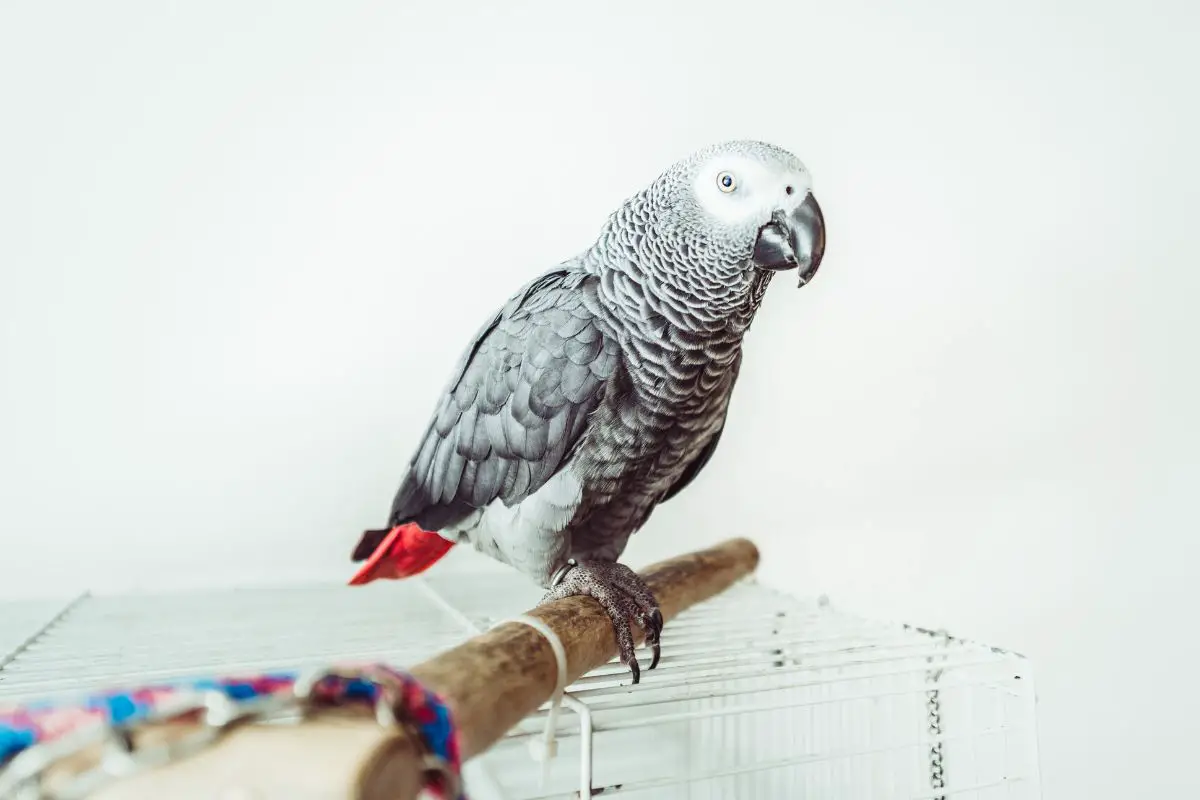
The native central and west African gray parrot lives in the savannah, forests, or woodlands and feeds on berries, fruits, nuts, and plants. African gray parrots live for about 23 years. They’re sweet, affectionate, and sociable.
The African gray is a medium-sized parrot, most notable for the infamous Alex, the genius African gray parrot that took part in a thirty-year-long research project. Critics of Pepperberg’s findings, which showed that Alex was capable of two-way communication and novel learning, argued that Alex’s acquired skills were due to memorization and learning through negative or positive reinforcement (operant conditioning). Still, Alex could identify fifty unique objects and distinguish between colors, shapes, and textures.
Apparently, Alex could also count to six. Because cats are notoriously difficult to study in a lab setting, information about them has been a slow and ongoing process. It’s long been suspected that cats too have an ability to count, evidence based on when a nursing cat knows a kitten has gone missing from her litter.
My own experience has shown me that cats, at least one cat that I know of, can count to 6.
2. Ferret
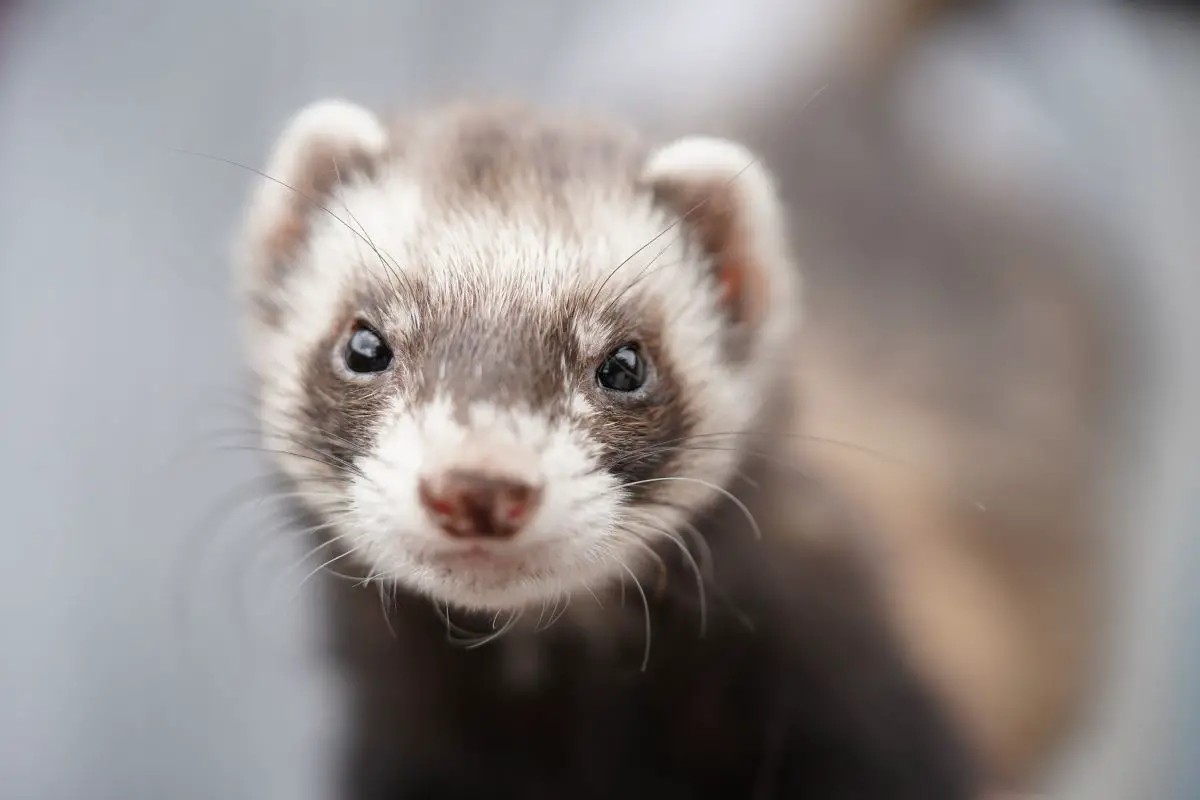
A ferret is thought to have come from the European polecat. It’s found living in mountains, forests, and semi-dry desert environments. Ferrets are native to parts of western Asia, Europe, and North Africa and, like cats, ferrets are carnivores and so require a diet high in protein.
Ferrets live roughly 5 to 10 years and also, like cats, can be mischievous. Ferrets are smaller than cats, have a musky odor, and have long bodies. They are part of the Mustelidae family.
Ferrets are similar to cats in their display of some odd behaviors that include hoarding random objects, usually stolen from their unsuspecting owner. Cats come in a variety of personalities and may behave in funny ways too. For instance, they have the tendency to run around a room at high speeds.
This behavior is often referred to as getting the “zoomies” and is thought to be a way for a cat to release pent-up energy.
3. Mouse

Mice are mammals and part of the rodent family. They live outdoors and usually create burrows or sleep in small shrubs and bushes. Their diet is high in carbohydrates as they eat plenty of plants in addition to tiny critters on the ground.
Their lifespan is pretty short and typically lasts a little over one year at the most. Mice are very intelligent, observant, and timid. Mice and cats are very territorial.
Mice have been observed fighting over resources as well as their rank in dominance in a lab setting. In the wild, mice claim an area of roughly 10 feet and defend it via scent markings, similar to a cat spraying for the same purpose. Cats are avid protectors of their invisible borders and will defend them from approaching felines that don’t belong to them.
Male cats will claim territories as wide as up to 20 blocks.
4. Pot-bellied Pig

Pot-bellied pigs originate from Vietnam. Sometimes called mini-pigs, these smaller-than-average household pets can range in weight from 100 to 200 lbs. Pot-bellied pigs eat a specially formulated chow which includes veggies, fruit, and pellets.
Mini-pigs can live from 12 to 18 years and are actually quite intelligent. Similar to cats, pot-bellied pigs are sensitive and prone to moodiness. They wear their moods on their tails and can express anger, aggression, or fear.
Among other piggies, they have a social ranking where dominant pigs take the lead. Pigs are complex and need mental stimulation to stay content. They show problem-solving abilities similar to cats.
Research has compared dogs and cats, involving their owners to see how, or if, owners play a role in finding a solution to a problem-related task. While dogs look to their owners before solving the task, cats solved the task independently. This independent problem-solving behavior has been seen in pigs, too.
5. Serval
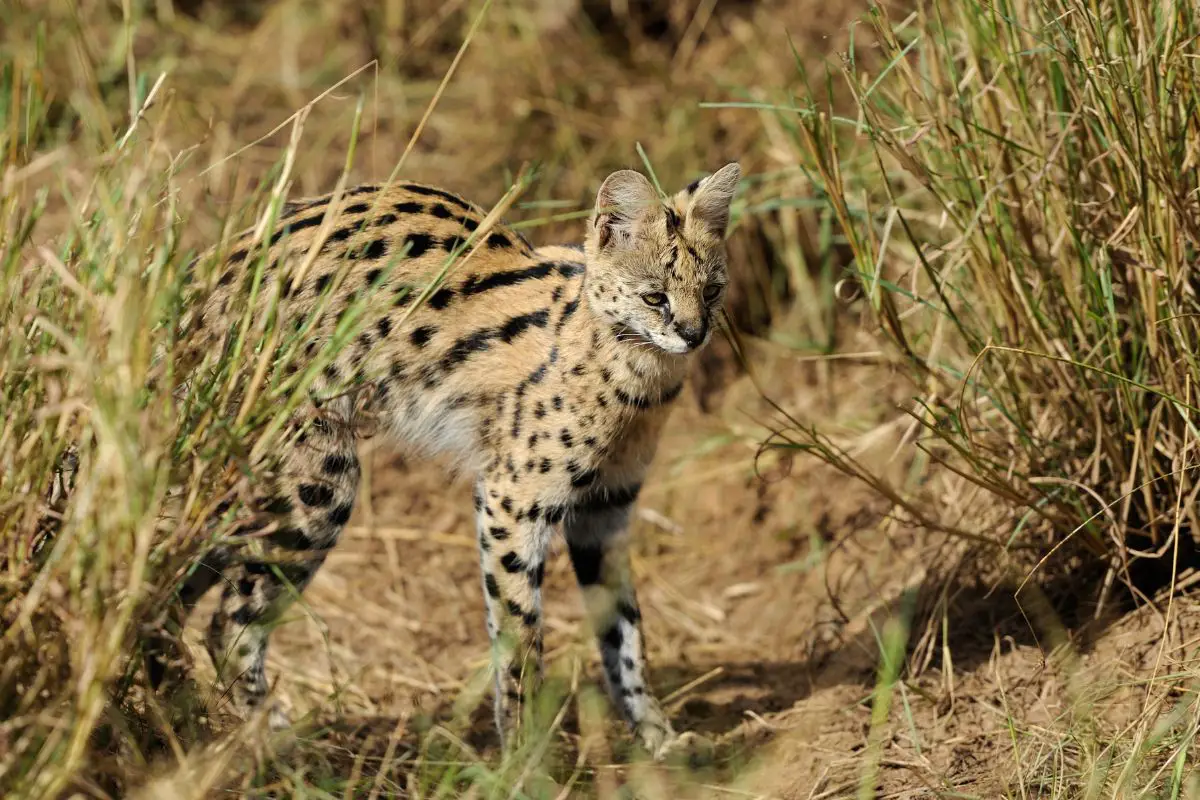
Serval cats are native to Africa and live near streams of water among the brush and tall grass. They eat small rodents, reptiles, and birds. A serval cat is a type of wildcat that slightly resembles a cheetah except its markings include spots and several stripes along its back.
Serval cats live for about 19 years and can weigh between 20 and 40 lbs. Like domestic cats, Servals are crepuscular, most active after sunset and before sunrise. In some states, it’s legal to keep servals as pets.
They typically bond strongly with one person and can even be affectionate, but because they’re wild, keeping a serval for a pet is still risky.
6. Border Collie

Border collies are an intelligent British breed and are known for obedience, trainability, and herding. They typically live for 10 years at least and may live for as long as 17 years. Border collies range in size and may grow to be just under two feet.
They have energetic, loyal, and sharp temperaments. Because they’re herding dogs, they may herd their owners or the family cat around the house. Like cats, border collies have been known to bring their owners random treasures, like toys.
On the other hand, a cat’s treasure is usually alive and squirming or dead. But cats like to shake things up and some prefer bringing giant leaves home to their owner. On the other hand, sometimes cats take it to another level completely.
Besides live mice, dead mice, and headless mice, I’ve been presented with a tire ad, a pizza menu, blank paper, a leasing notice, many leaves, an entire branch with leaves on it, several rocks, a milk carton, a hanger, and something that I can only hope is the inner lining of a sofa. I’ve kept almost all of it.
7. Magpie
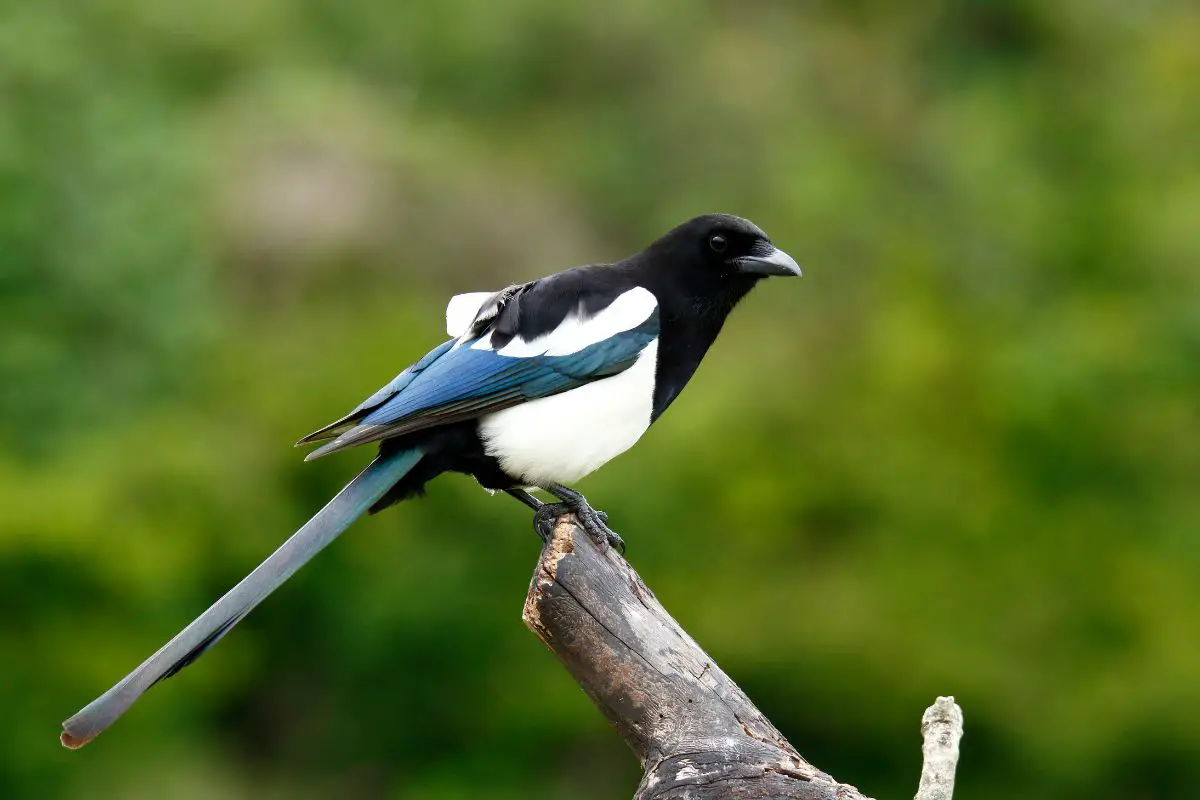
Magpies are considered highly intelligent and are thought to be one of the smartest creatures to exist, rivaling the intelligence of apes and dolphins. Magpies grieve when one of their own dies and they recognize themselves when they see their reflection in the mirror. Magpies have a unique way of pointing, a way to notify other magpies of danger, for instance.
Humans have mostly focused on the finger-pointing test to assess if animals can pass or fail it. At the time, it was assumed to require a complex cognitive process. Dogs, for instance, will look at where their owner is pointing, while cats will look at their owner’s finger, instead.
However, magpies understand by pointing in a completely different way. I’ve noticed the same thing while watching cats interact. Cats don’t pay attention to fingers because they seem to use their heads, a nodding gesture, to point to something.
I can’t confirm this, of course, it’s based on my casual observation. But I think I’m right about this.
8. Orca Whale

Orca whales live primarily in the cold waters of Norway, Alaska, and Antarctica. Orcas eat fish, squid, seals, and birds. Orcas can be as long as 26 ft and weigh as much as 8,800 lbs.
They can live as long as 45 years in the wild, although captivity cuts their life by 15 years. Studies have shown that orcas are able to produce human speech. Likewise, the internet is full of cat owners claiming their cats are saying words.
While some veterinarians and animal researchers argue that what we hear is due to our minds filling in the blanks on account of wishful thinking. But I disagree. My experience shows me that cats and orcas have that in common.
The differences between orcas and cats are obvious otherwise.
9. Horse

Horses are found all over the world. They like to graze, eating a little bit throughout the day, much like cats, actually. Horses belong to the Equidae family and have been essential to humans for work and sport throughout history.
Horses live around 25 to 30 years and range in size and breed. They communicate using their ears, body, and touch. But who could have ever known what horses prefer to wear until a common language using symbols was created to break the communication barrier?
In a study published in 2016, researchers created visual symbols that could be pressed, which gave handlers a choice between riding with or riding without a blanket. Horses were later trained to do the same, quickly learning which symbol correlated to each option. The study showed that horses indeed had a preference, choosing the option for a blanket depending on the weather.
Like horses, cats can learn how to press buttons for food or cuddles, to communicate what they want to their owners. My cat uses something similar, a number system that she came up with (you read that right and yes, it’s unbelievable). We use it daily to communicate food preferences.
10. Lynx
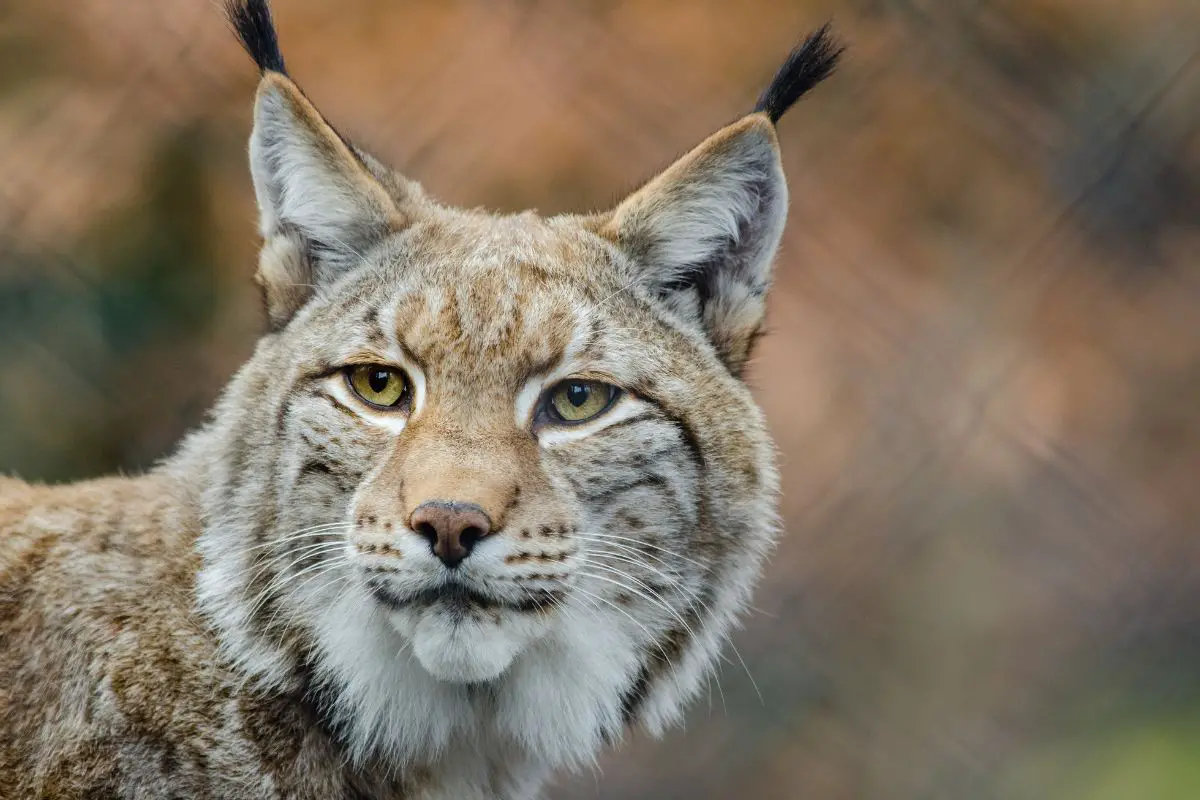
A lynx is a cat that travels solo throughout the North American, European, and Asian forests. Its name refers to four different species of Lynx that are native to different regions. A lynx usually makes its home in dens it forms within large crevices.
An avid hunter, the lynx eats a variety of animals including deer, hare, fish, mice, and turkeys. Cats and lynx are related and both are also natural hunters.
11. Dolphin

Most dolphins live in the oceans near the coast. Dolphins are aquatic mammals of which there are 40 different species. They can be as short as 5.5 ft or as long as just over 31 ft.
A dolphin’s teeth are shaped like a cone, which allows them to catch quick-moving prey in the water and they can hear both in water and above water. Dolphins are considered to be very intelligent and are known to form tight social bonds and show altruistic tendencies, staying with an injured member and protecting humans from sharks. Dolphins have exceptional long-term memories, the longest of any other non-human animal.
Cats too have excellent long-term memories, although it is thought theirs is much more selective.
12. Opossum
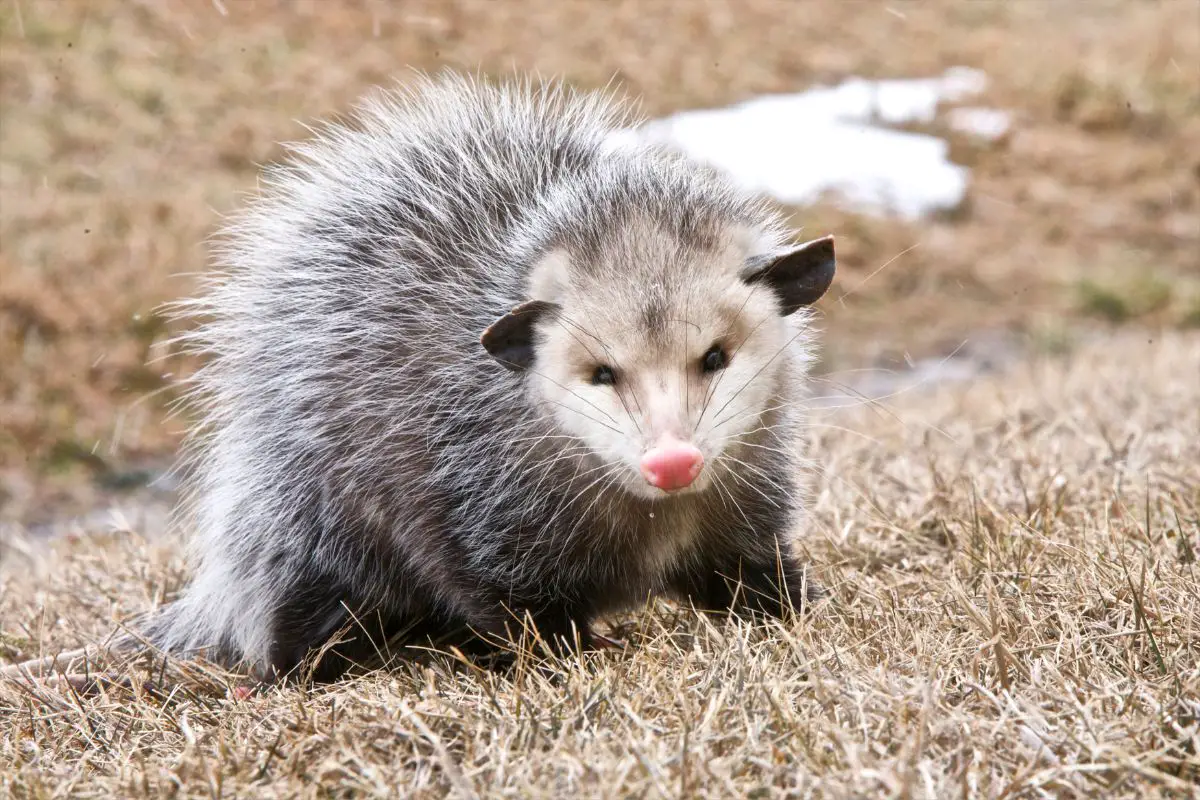
Opossums, not to be mistaken for possums, are marsupials native to Texas where they’re frequently seen rummaging through garbage. They’re scavengers and tend to eat small bugs or lizards and anything else they can find, including cat food. Also, if any windows are open, they let themselves in and if the cat food is out, they’ll eat it.
They’re nocturnal and come out to look for food at night. Opossums are one of the oldest existing mammals that haven’t changed a great deal from their primitive days. The opossum is similar to cats in how much it sleeps.
Opossums can sleep up to 18 hours per day, which is even more than cats, which usually sleep 12 to 16 hours per day.
13. Catbird
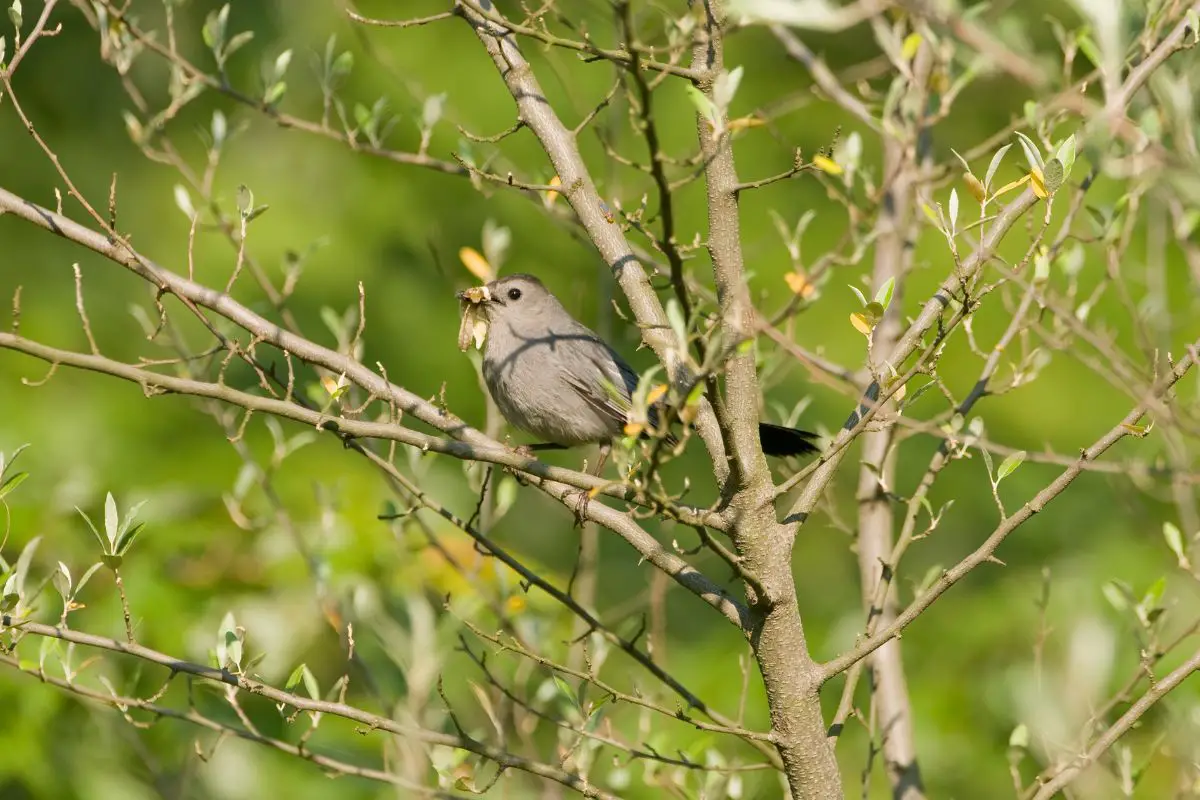
A medium-sized bird found in North America. Catbirds prefer overgrown brush and dense, overgrown, woodlands. They’re foragers and eat pieces of leaves and plants in addition to berries, mealworms, and earthworms.
Catbirds get their name from the sound they produce, which sounds like a cat meow. They can get quite aggressive when defending their nest, often attacking the intruder. While catbirds mimic cats, cats also mimic birds.
Although cats don’t necessarily mimic specific birds, they’re able to recreate the bird noises they hear when they hear them.
14. Chimp
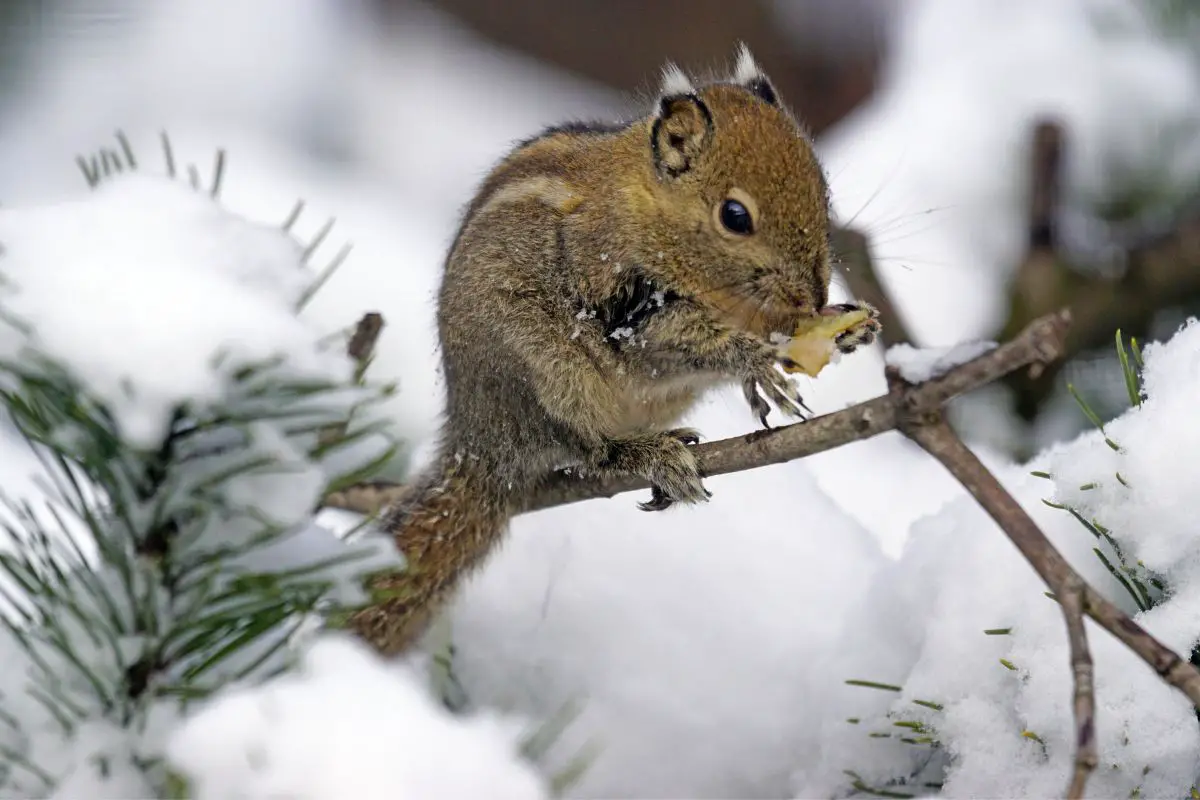
Chimps are found spanning west and central Africa, and are the closest living family member to humans today, genetically speaking. Chimps eat nuts, seeds, and leaves, in addition to fruit, bugs, and flowers. Chimps are primates and may live to be 32 to 39 years old when kept in captivity.
On average, chimps stand at just under 5 feet and can weigh 60 to 154 lbs. Chimpanzees have complex social structures. They live in groups within communities and have a hierarchy.
Chimps are known to mimic human behaviors and gestures, even imitating humans as they see them, at the zoo. And in a 2020 study, cats proved they could do the same. I’ve seen this copycat behavior on several occasions at home.
15. Belding’s Ground Squirrel
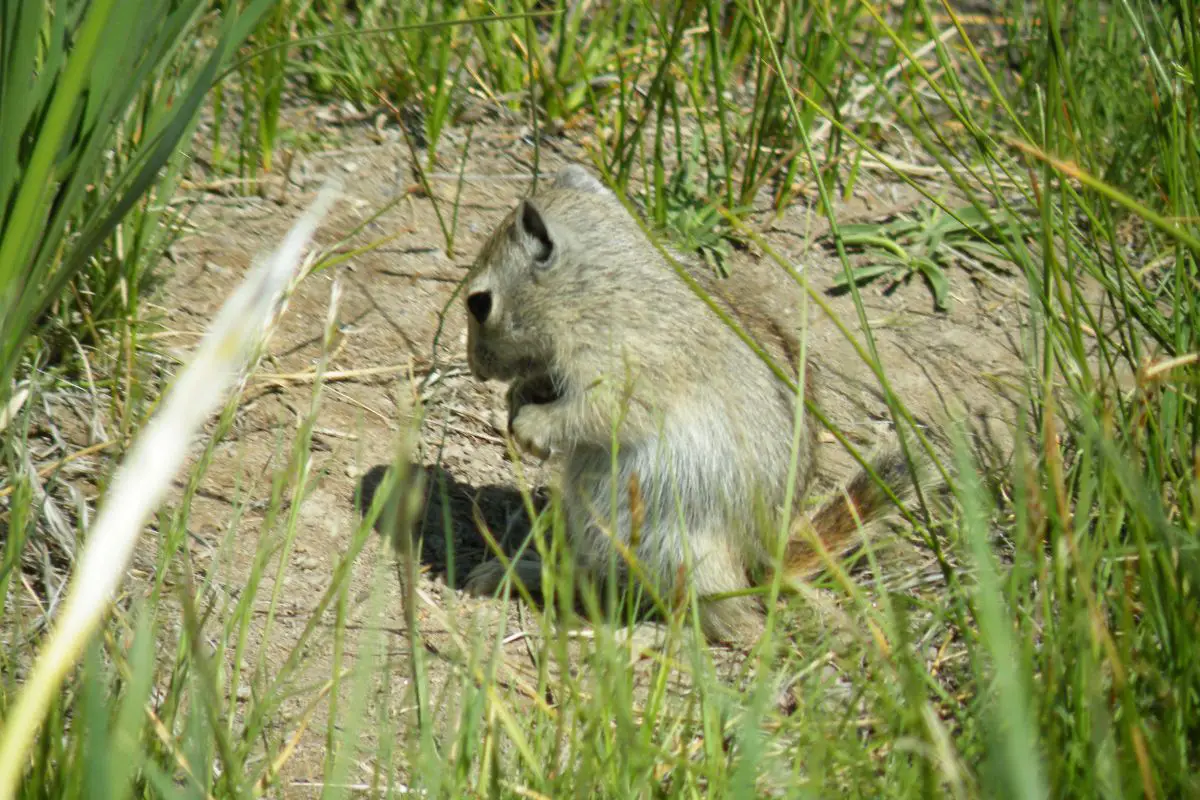
Ground squirrels live in the mountains of western parts of the US. They prefer higher ground and living in brush or tall, grassy areas. They eat mostly flowers, seeds, and insects.
Belding’s ground squirrels get up at sunrise and wait for others to get up before they go anywhere. During the day, they dig and look for food and prefer kin over others. Like cats, Belding’s ground squirrels communicate via scent.
Sniffing faces and touching noses upon meeting helps squirrels determine kinship. Cats touch noses to greet and communicate . One cat can determine another cat’s whereabouts and kinship with a nose touch.
FAQs
What Is The Rarest Color Of Cat?
The white coat of an albino cat, the rarest cat color, is actually due to a lack of color caused by a genetic mutation. However, chocolate is one of the rarest cat colors, as there are very few cats that have a true chocolate, medium brown, coat. The Havana Brown is one of the few.
What Breed Of Cat Follows You Around?
Cats are very individual, but some cats are known as “velcro cats”. Some cats bond closely with their humans. Or, they may be more social or vocal, which might mean they’ll follow you around if they like you.
Siamese cats are talkers. Other breeds, like Bengals and Maine Coons, love attention. It’s possible these cats will follow you from room to room.
Just know what you’re getting into.
What Color Makes Cats Happy?
Cats do see in color. However, theirs is a duller version of the colors humans can see. Because of their ability to see in low light (the UVB spectrum), colors such as white appear hyper-bright, almost fluorescent.
So, white coats and white walls in a vet setting may feel especially disturbing to cats. While it’s difficult to say what color will make a cat happy, studies suggest that, for cats, soft colors, particularly yellow or violet, can be more calming.
